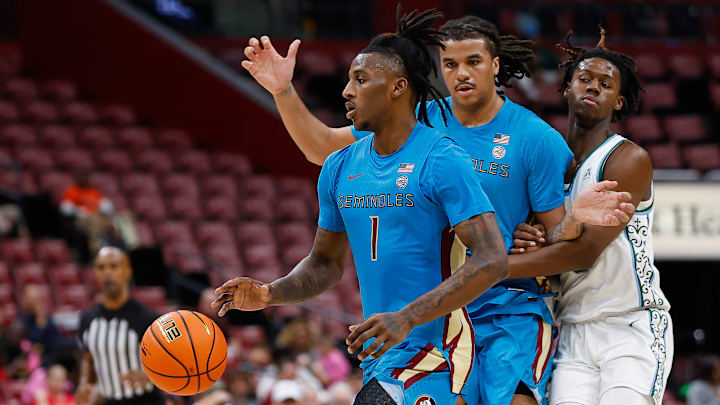It’s only Year 2 of the Mark Pope era, but Kentucky’s identity is already evolving.
After a 2024 offseason that saw Pope load up on shooters and offensive weapons, the 2025 version of Kentucky basketball is being built in a new image: long, athletic, defensive-minded, versatile players.
From flashy to fierce
Look at the two transfer classes side by side, and the shift is undeniable.
Last year’s class?
Guys like Koby Brea (43.5% from three), Jaxson Robinson (13.0 PPG), Otega Oweh (16.2 PPG), and Andrew Carr (10.3 PPG) could fill it up. It was a group designed to spread the floor, light it up from deep, and outscore teams.
But defense? Rim protection? Physical rebounding? That wasn’t their calling card.
This year’s class? It’s a different beast.
Meet the new defensive core
Jaland Lowe (PG, Pitt Transfer): Averaged 16.8 points, 5.5 assists, 4.2 rebounds, and 1.8 steals per game. His all-around playmaking and defensive tenacity make him a valuable asset. But under 30 percent from 3.
Mouhamed Dioubate (F, Alabama Transfer): Contributed 7.2 points and 5.9 rebounds per game, shooting 61.7% from the field. Known for his physicality and defensive presence.
Kam Williams (G, Tulane Transfer): Tallied 9.3 points and 4.5 rebounds per game, with a 41.2% three-point shooting percentage. His length and defensive versatility add depth to the perimeter.
Jayden Quaintance (F, Arizona State Transfer): Averaged 9.4 points, 7.9 rebounds, and 2.6 blocks per game. His shot-blocking ability and defensive instincts are expected to bolster the frontcourt.
The contrast is stark
Compare those four to last year’s group:
Otega Oweh scored 11 points per game and shot 37% from three and was known as a good defender; that didn't translate to the court though. His shooting went down because of volume, but he was beat far too often back door to offset the offensive gains in most games.
Koby Brea shot nearly 50% from three and was Kentucky’s best pure shooter.
Andrew Carr, Amari Williams, and Brandon Garrison provided some rebounding and rim protection, but the overall DNA leaned toward spacing and offense.
Kerr Kriisa was a supposed to be a shooting point guard, but was hurt before he could find his momentum.
Lamont Butler brought defense, but he was the exception, not the rule.
In short, Pope went all-in on shooters and scorers in Year 1. In Year 2? He’s building a defense-first foundation.
Why the shift?
Call it a reaction. Call it a recalibration. Call it experience. But these guys are heavy on the D, and a little lighter on the 3.
Pope saw firsthand what happened when his team went cold from three or when they couldn’t secure a defensive rebound down the stretch. He’s correcting that this offseason — and doing it fast.
He’s still leaving room for shooters — Braydon Hawthorne may be added to the 2025 class — but the priority has clearly shifted. Length, toughness, defense. That’s the new mantra.
Final thoughts
Some fans may be puzzled by the lack of three-point threats in this year’s portal class. But remember: Pope isn’t abandoning offense — he’s building a team that doesn’t have to win only with offense.
In Year 1, Pope assembled a team that could run up 85 points. In Year 2, he’s building one that can win 68-64 on the road.
And in March, that just might make all the difference.
